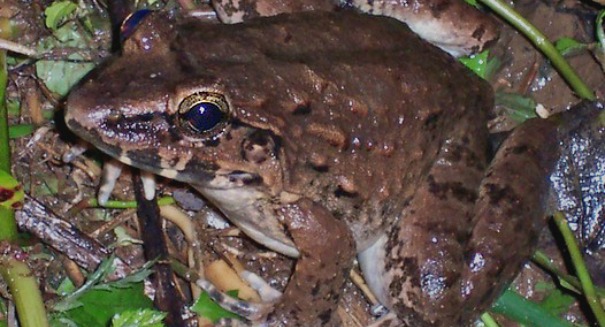
A scientist stumbled upon the frog and, thinking it was a male, was surprised when it squirted out tadpoles upon picking it up.
The discovery of a true biological oddity has been confirmed by researchers: a fanged frog that gives birth to live young, the only known frog that can do that.
Researcher Jim McGuire of the University of California, Berkeley, during a rainforest trip in Indonesia last summer, found what he thought was a male frog and reached down to pick it up, but it turned out to be a female and it squirted tadpoles into his hand, according to NBC News.
Later, it was determined that the frog is a newly discovered species that is a member of a group of Asian fanged frogs that McGuire’s colleague first discovered a few decades ago, but no scientific paper had reported on it. Although his colleague, zoologist Djoko Iskandar, suspected that the frogs gave birth to live young instead of laying eggs like most amphibians, scientists hadn’t actually observed it birthing tadpoles until McGuire’s discovery.
The species has been named Limnonectes larvaepartus, and it is being officially described in a new study published in the journal PLOS ONE.
For most frog species, fertilization happens when the female lays her eggs and then the male comes later to lay his sperm on it, but for a few species, the fertilization happens within the body of the female.
Even in these cases, the fertilized eggs are usually laid underneath rocks in streams before hatching, but L. larvaepartus is the first known species to give birth to live tadpoles, according to the research.
The Limnonectes genus of fork-tongued frogs includes about 61 known species, with new ones occasionally being uncovered. They are called fanged frogs due to their large teeth in comparison to other frogs, which typically have only small teeth or no teeth at all. These teeth are located in the lower jaw and are used for fighting. They can range in weight from up to 2 lbs to no more than a few grams.
The newest discovery is only the fourth described species on the island of Sulawesi, where McGuire made the discovery, but researchers believe that there could be as many as 25 species there.
The island itself is an ancient won, forming 8 to 10 million years ago from several islands merging together. It provides an ideal spot to study evolutionary diversity.
Many of the fanged frogs have developed their own little ecological quirks, and scientists are trying to understand how much of the diversification happened before the merging of the islands, and how much has occurred since.
Leave a Reply